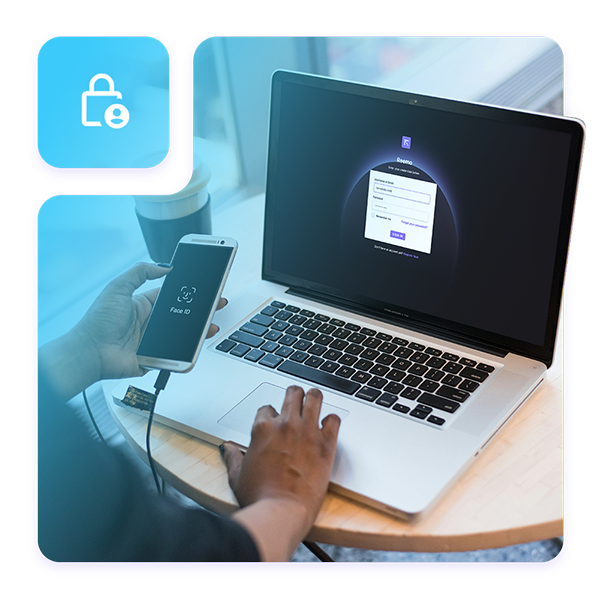In today's dynamic, remote work-centric environment, the necessity for secure and dependable remote...
The Significance of Zero-Trust in Today's Market
Explore the revolutionary impact of the zero-trust model in the current market landscape.

Understanding Zero-Trust: Breaking Down the Concept
The concept of zero-trust is a revolutionary approach to cybersecurity that challenges traditional security models. Unlike the traditional perimeter-based security approach, which assumes trust within the network and focuses on protecting the perimeter from external threats, the zero-trust model operates on the principle of 'never trust, always verify.' This means that every user, device, and network resource is treated as potentially malicious and must be continuously authenticated and authorized.
By breaking down the concept of zero-trust, organizations can better understand its key principles and benefits. It involves implementing strict access controls, micro-segmentation, and continuous monitoring to ensure that only authorized users and devices can access sensitive data and resources. This approach eliminates the assumption of trust and reduces the risk of insider threats, lateral movement, and unauthorized access.
Importance of Zero-Trust in Modern Business Operations
In today's digital landscape, where cyber threats are becoming increasingly sophisticated, the importance of adopting a zero-trust model cannot be overstated. Traditional security measures such as firewalls and VPNs are no longer sufficient to protect against advanced attacks. With the rise of remote work and cloud computing, the attack surface has expanded, making it essential for organizations to implement a zero-trust approach.
Zero-trust ensures that even if a user's credentials are compromised or a device is infected with malware, the attacker's access is limited, minimizing the potential damage. It also provides granular control over access permissions, reducing the risk of data breaches and unauthorized access to sensitive information. By adopting a zero-trust model, organizations can enhance their overall cybersecurity posture and protect their critical assets from both internal and external threats.
Zero-Trust Model's Role in Today's Competitive Market
In today's competitive market, where data breaches and cyber attacks can have severe financial and reputational consequences, the zero-trust model has emerged as a key differentiator. Organizations that prioritize security and demonstrate a commitment to protecting their customers' data gain a competitive edge and build trust with their stakeholders.
By implementing a zero-trust model, organizations can showcase their expertise in cybersecurity and position themselves as industry leaders. This approach allows businesses to proactively address security risks, comply with regulatory requirements, and provide a secure environment for their customers and partners. In an era where data privacy and security are paramount, the zero-trust model is a strategic investment that can drive business growth and enhance brand reputation.
Implementing Best Practices for Zero-Trust Security
Implementing a zero-trust model requires careful planning and adherence to best practices. Some key best practices for zero-trust security include:
- Adopting the principle of least privilege, ensuring that users and devices only have access to the resources they need to perform their tasks.
- Implementing strong authentication mechanisms such as multi-factor authentication (MFA) to verify the identity of users and devices.
- Applying micro-segmentation to create isolated network segments and limit lateral movement within the network.
- Implementing continuous monitoring and analytics to detect anomalous behavior and potential security breaches.
By following these best practices, organizations can establish a robust zero-trust security framework and effectively mitigate security risks.
Challenges and Solutions in Adopting the Zero-Trust Approach
While the zero-trust model offers numerous benefits, its adoption can pose challenges for organizations. Some common challenges include:
- Legacy infrastructure: Organizations with legacy systems may face difficulties in implementing the necessary changes to adopt a zero-trust approach. Upgrading or replacing outdated infrastructure can be time-consuming and costly.
- User experience: Implementing strict access controls and authentication mechanisms may impact user experience. Organizations need to strike a balance between security and usability to ensure a seamless user experience.
- Cultural shift: Adopting a zero-trust model requires a cultural shift within an organization. It involves changing the mindset of employees and stakeholders to prioritize security and embrace a zero-trust approach.
To overcome these challenges, organizations can:
- Gradually phase in the zero-trust model, starting with critical assets and gradually expanding the implementation.
- Invest in user-friendly security solutions that minimize disruption to user experience, such as Reemo.
- Provide comprehensive training and education to employees to raise awareness about the importance of the zero-trust model and its benefits.
By addressing these challenges head-on, organizations can successfully adopt the zero-trust approach and reap its rewards.
.png?width=50&name=Design%20sans%20titre%20(1).png)


